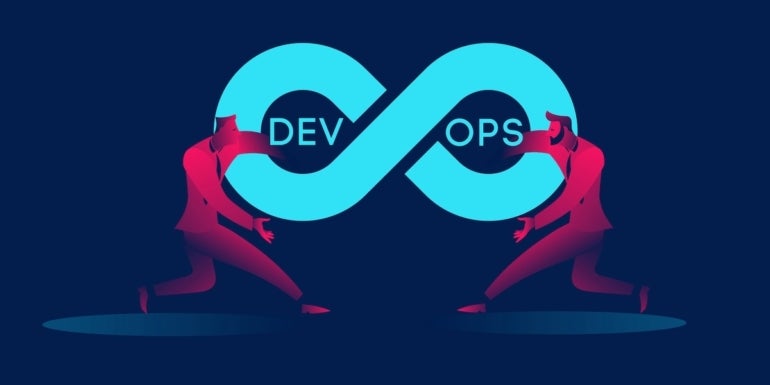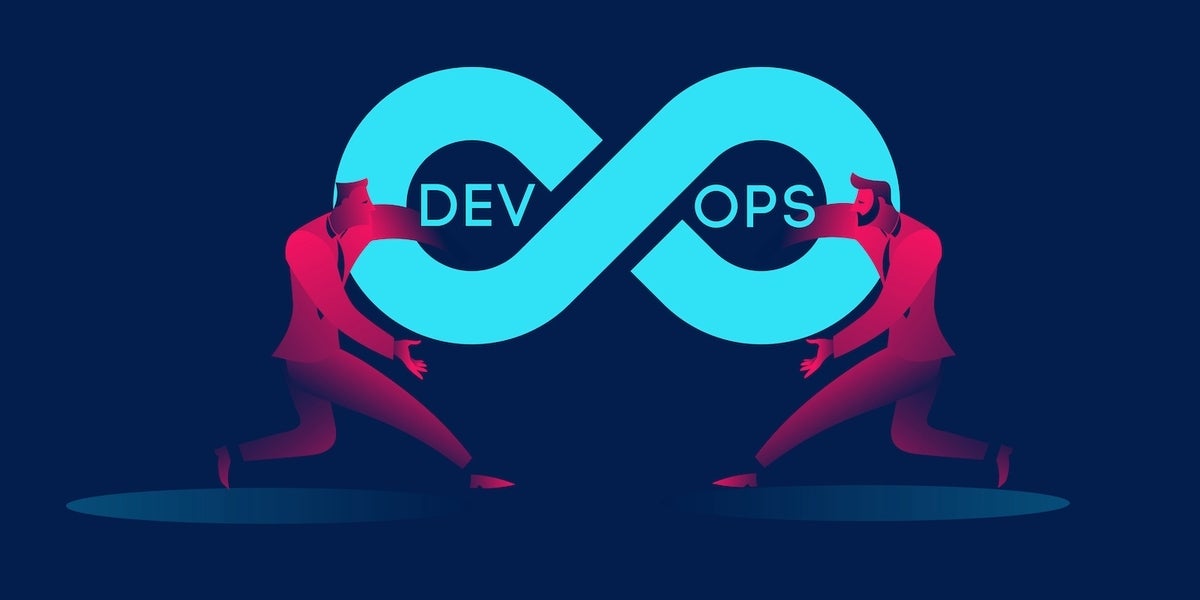
In software development and IT operations, DevOps has become an ideal approach for building, testing, and deploying applications. One of the core philosophies of DevOps revolves around the idea of creating a “DevOps pipeline”, which represents a group of automated processes that enable continuous integration, delivery, and deployment of software. This tutorial gives a comprehensive overview of what a DevOps pipeline is, how it works, and best practices to implement pipelines in a DevOps environment.
What is DevOps?
Before we dive too deeply into the subject of DevOps pipelines, we should first discuss the core principles of DevOps, which includes:
- Collaboration
- Automation
- Continuous integration and continuous deployment (CI/CD)
Collaboration
As you might imagine, since DevOps involves multiple teams – development and operations – collaboration is a crucial element of a DevOps approach. Collaboration should break down silos and separation and foster a sense of shared ownership and responsibility for the entire project and software development lifecycle (SDLC).
Automation
In DevOps, automation is the process of automating repetitive software development tasks, such as testing, performance analysis, and deployment. Automation is a key concept in DevOps, as it helps to mitigate risks, reduce human errors, increase productivity and efficiency, and accelerates the overall software development process. This makes it so organizations can go to market sooner with more reliable products.
You can learn more in our tutorial: What is DevOps automation?
Continuous integration and Continuous Deployment (CI/CD)
Another main feature of DevOps is Continuous Integration and Continuous Deployment (CI/CD). Continuous Integration is the process of merging changes in code and codebases into a shared repository, such as Git. Continuous Deployment, meanwhile, is the automation of the release of these changes to a production environment after it passes through the stages of testing and debugging.
What is a DevOps pipeline?
Now that we know some of the core elements of DevOps, we can further discuss DevOps pipelines. A DevOps pipeline (also commonly referred to as a CI/CD pipeline), is a group of automated steps that assist in the integration, testing, and eventual deployment of changes in code. It is a method that allows programmers to streamline software development so they can deliver reliable software and software updates more rapidly. DevOps pipelines automate manual tasks, helping to reduce errors, ensure more consistency, and facilitate quicker feedback loops for developers.
What are the Components of a DevOps Pipeline?
The majority of DevOps pipelines are made up of several primary components, which include:
- Version control system
- Continuous Integration
- Automated testing
- Continuous Delivery
- Deployment to production
Version Control System
A Version Control System (VCS) is a tool that lets developers manage and track changes to a codebase, whether those changes are from a single developer or a group of developers in a collaborative environment. An example of a VCS would be Git. Once a code change is “committed” to the VCS, it triggers the pipeline and signals it to begin. This is an essential element of the DevOps pipeline, as it kicks off the rest of the processes.
You can learn more about the need for a VCS in our tutorial: Benefits of Version Control.
Continuous Integration
The next part of the pipeline is the Continuous Integration or CI phase, in which the pipeline automatically builds and tests code changes as they are pushed to the Version Control System. The goal of this part of the phase is to catch any integration issues early to keep the codebase in a functional state. If the Continuous Integration tests fail, the pipeline will stop and alert programmers that the code has issues and needs to be fixed.
Automated testing
As noted, part of the CI phase is to test code. These code tests include unit tests, integration tests, and end-to-end tests whose goal is to validate the functionality of the code and prevent regressions in changes. These tests are automated via various tools and provide a method for rapid feedback for developers. It also ensures that code changes do not introduce new bugs and issues into the existing codebase.
Continuous Delivery (CD)
Continuous Delivery refers to the process of automatically deploying software to pre-production environments once it passes the CI phase and automated testing stages. This important phase makes certain that the software is ready for release and can be deployed to production.
Deployment to production
The fifth and final stage of a typical DevOps pipeline is the deployment of an application to a production environment. Once more, this is an automated step and it will follow specific release management best practices in order to ensure the deployment is controlled and runs smoothly.
What are the Benefits of a DevOps Pipeline?
In this section, we discuss some of the benefits of implementing a DevOps pipeline in your software development process. As you might imagine, using a DevOps pipeline has multiple benefits to software developers and IT operations, including:
- Faster time-to-market: Automating manual development tasks and using the Continuous Delivery of code changes helps drastically reduce the time needed to update software, fix bugs, and add new features to software for end-users.
- Makes software more reliable: The automated testing and Continuous Integration phases of DevOps pipelines helps coders catch and fix issues early in the development process, which improves the reliability of software, updates, and patches.
- Consistency: Again, automated testing ensures that applications consistently meet quality standards and requirements before being deployed or released to production.
- Agile-friendly: DevOps pipelines enable developers to quickly iterate and respond to customer feedback, making it ideal for Agile software development approaches.
- Reduces and mitigates risks: By automating software deployments and utilizing standardized processes, development teams can mitigate and minimize the risk of human errors and the chance of issues with deployment.
How to implement a DevOps pipeline
While implementing a DevOps pipeline offers many benefits, setting one up is an involved process, requiring careful planning and implementation. Below are some steps you can use to ensure you get started successfully, including:
- Define the workflow
- Choose the right CI/CD tools
- Automate testing
- Incorporate Continuous Integration
- Implement Continuous Deployment
- Monitor and iterate
Define the workflow
The first step to implement a DevOps pipeline is to outline the specific stages of the pipeline. This means CI/CD workflows that exist from code commits to production deployment. Create a document that clearly defines the roles and responsibilities of each team member for each step of the implementation.
Choose the right CI/CD tools
A key element to successfully implementing a DevOps pipeline is to ensure you choose the appropriate tools for the job. This tools will include DevOps tools for version control, Continuous Integration, automated testing, and build/deployment software. Popular DevOps tools include Git for version control, Jenkins, GitLab, or Bamboo for CI/CD processes, and Selenium for automated testing.
Automate testing
Next, create a thorough suite of automated tests that will cover all aspects of the software’s functionality and features. Include tests such as unit tests, integration tests, and end-to-end tests.
Incorporate Continuous Integration
Create a Continuous Integration system so that your team can build and test code automatically as changes are pushed to the Version Control System.
Implement Continuous Deployment
The fifth step is to implement a Continuous Deployment process by automating deployment processes to pre-production environments. Doing this facilitates extensive testing and validation prior to deploying software to production.
Monitor and iterate
The final phase is to monitor the pipeline’s performance regularly and get feedback from developers. You will then use this feedback to identify any areas for improvement and then iterate on the pipeline, enhancing its efficiency.
What are the challenges of implementing a DevOps pipeline?
Implementing a DevOps pipeline, especially for the first time, can come with certain challenges, which may occur at any point during implementation. These challenges include:
- Culture: In most instances, incorporating DevOps will require a culture shift. Teams will need to adjust to changes in development and operations, as well as break down silos and cultivate collaboration between departments. Creating a collaborative and communicative culture is key to success.
- Training: You will need to assess existing skills and train teams where needed. This training can include programming languages, tools, and best practices that are commonplace in DevOps environments. Expect to invest in some level of skill development to ensure pipeline implementation success.
- Complexity: Particularly with larger projects and complicated architectures, you may need to create more complex pipelines. Managing this complexity is important, as it can quickly spiral out of control.
- Security and compliance: DevOps approaches, in particular, prioritize security and compliance in order to mitigate and avoid vulnerabilities, exploits, and to ensure regulatory adherence. Organizations that place even more emphases on this last challenge should consider looking further into DevSecOps, which marries development, operations, and security.
SEE: Best Collaboration Tools for DevOps Developers
Final Thoughts on Best Practices for DevOps Pipelines
DevOps pipelines are a crucial element of modern software development and IT operations. DevOps pipelines help software development teams deliver high-quality software more efficiently, reducing time-to-market and fostering both communication and collaboration between the development and operations teams. Automating integration, testing, and deployment processes streamlines the software delivery lifecycle and facilitates Agile approaches for teams that practice the methodology.
Finally, creating and using a DevOps pipeline can be difficult and present challenges, but the benefits that DevOps pipelines offer far outweigh any difficulties associated with implementation.


